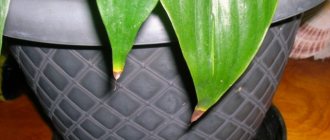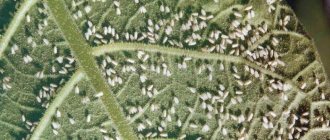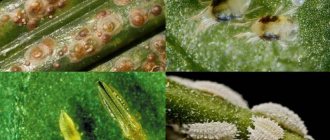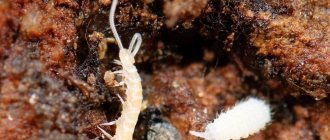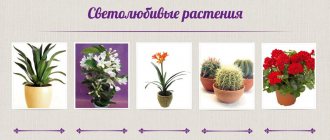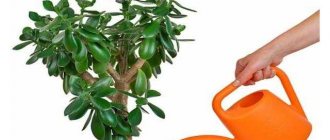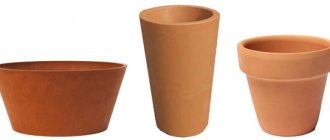All lovers of indoor plants have at least once asked the question: “Where did insects come from on a flower?” After all, it would seem that raising green pets indoors is a guarantee that no infection will harm them. Unfortunately, this is not the case, and from time to time almost every home garden is subject to an invasion of parasites.
Here are some of the most common causes of the epidemic:
- Open vents and windows. Flying insects easily penetrate through vents and cracks in the window.
- Moving plants outdoors during the warm season.
- Purchase of an infected plant. When buying another beautiful flower, you may not notice lurking pests, which in indoor conditions begin to multiply quickly, spreading to nearby crops.
[!] Many nurseries, both domestic and foreign, are infested with insects. Despite the measures taken, some of the plants go on sale already infected.
- Transplantation into a new substrate. Often, various insects live in soil taken from a garden or forest. At home, parasites, unable to find other food, attack the flower. Unfortunately, some purchased soils are also infested with pests.
- Errors in care. Overwatering, underwatering, too dry or, conversely, humid air, insufficient or excessive lighting - all this weakens the plant. The resistance of a sick organism decreases, and insects willingly take advantage of this by attacking the flower.
As you can see, there are quite enough ways for aggressors to enter the closed space of an apartment. Of course, in indoor conditions, pests attack plants much less often than in open ground, but if this happens, fighting them becomes a real difficulty.
Whitefly
Pests of indoor plants (photos and names of insects are presented in the article for basic reference) in the form of whiteflies have a body length of up to 2 mm. A distinctive feature is the body, which has a yellowish color and white wings.
You can detect the parasite as follows:
- on foliage from the underside;
- along a sweetish trail, in place of which a sooty fungus appears.
The insect feeds on plant sap, which leads to loss of its attractiveness. It can be found on pelargonium, begonia and hibiscus. You can fight the pest by washing the foliage with a solution of laundry or liquid soap, sticky traps or ash. Plants can be sprayed with insecticides such as “Prestige”, “Commander”, “Aktara”.
Control measures
How to get rid of pests? This question haunts many indoor plant lovers. Pest control can be done in a variety of ways. For example:
- Mechanical.
- With the help of biological drugs.
- Using chemical control agents.
- Based on folk recipes.
Pests of indoor plants and their control, plant protection, how to get rid of them
Mechanical method
This is an environmentally friendly, simple and affordable way to combat parasites on your own. To do this, you need to take a tool, preferably disinfected, and cut off the damaged parts of the plants. It is better to treat the cut areas with activated carbon. Pests that can be seen with the naked eye can be picked out with your hands without any problems, unless there are so many plants and pests.
Interesting recipe! A contrast shower will help rid indoor plants of parasites. It is enough to spray the flower with water and then wipe the leaves with a cotton swab and the problem can be solved.
Folk remedies
To protect them from various insects, as well as in cases of their diseases, many lovers of indoor plants prefer folk remedies. These products have been tested for many decades, so there is no doubt about their effectiveness. Decoctions prepared from plants such as chamomile, nettle, yarrow, dandelion or marigold are absolutely harmless to humans and plants. Solutions prepared with garlic and onions have the same effect. The prepared solutions are simply sprayed on the plants almost every day.
As an option, you can use citrus peels, which should simply be buried in the ground. The smell of these components cannot be tolerated by many parasites that want to settle on indoor plants.
Solutions based on wood ash, furatsillin, soda or potassium permanganate work no less effectively in this direction. You just need to prepare the solution correctly, after which the plants are sprayed with a spray bottle.
It is important to know! If you add a little soap, preferably laundry soap, to the solutions, the product will not drain from the leaves so quickly, which will enhance the effect of using the product.
Biological method
Biological preparations differ in that they act only on certain types of pests and are safe for humans and pets. Despite this, the working composition must be prepared correctly and used correctly. For example:
- The solution is prepared strictly according to the instructions.
- After treatment, the plant should dry.
- The room needs to be well ventilated.
For such purposes, you can use control agents such as Agrovertin, Fitoverm or Iskra-Bio.
Fungus gnats
The fungus gnat is presented in the form of a black midge that sucks juice from the roots of plants. They can appear on any indoor plants. To detect the pest, it is enough to remove the top layer of soil.
You can fight insects by drying the soil mixture in a pot. Such drugs as “Mukhoed”, “Aktara” and “Inta-vir” will help to remove the larvae. Additionally, you can use Raptor spray.
Pests that destroy the root system
Particularly difficult in the complex of protective measures are pests in the soil of indoor plants, the presence of which is detected only by indirect signs, and to destroy it, it is necessary to primarily water the soil with insecticides.
Roots affected by root-knot nematodes
- Fungus gnats - sciarids
Adult flying insects do not cause harm, but the larvae living in the soil, feeding on organic debris, are able to eat the roots.
If you notice a lag in growth, it is advisable to carefully remove the plant from the pot and examine the roots. When white, fairly small worms are found, it becomes clear that the roots have been eaten by enchytraea, lovers of excessively moist soil. The earthen lump is placed in a container of water to soak, after which the roots are thoroughly but carefully washed from the soil. The plant is transplanted into newly prepared soil. In some cases, watering with an insecticide is acceptable.
Caterpillars
Caterpillars are small worms with a body length of up to 2 cm. The larvae are variegated or monochromatic in color. They feed on the fleshy part of the green mass; some representatives wrap the leaf in a silk thread. The appearance of caterpillars is fraught with damage to the plant’s immunity. It weakens and can be susceptible to various diseases.
Pests can be found on cyclamen, balsam or geranium. You can protect the plant from the caterpillar by treating the foliage with a soap solution and then washing it with hot water.
Weevil
Pests of indoor plants (photo and name will help gardeners correctly identify a dangerous insect on a flower), presented in the form of weevils, have a body length from 1 mm to 3 cm. The body shape is oblong and slightly flattened.
The color can vary from black to yellow, and in some cases spots can be found on the surface of the body. A characteristic feature is the elongated front part of the head, due to which the insect got its name.
The weevil does not go through plants, so it can be found almost anywhere where crops are present.
After laying eggs, the larvae eat the buds, which causes a lack of flowering. Adults chew on foliage and petals, leaving indentations. If an insect penetrates the roots, the crop dies. The pest must be controlled by spraying the plant with preparations such as Bona Forte, Fitoverm and Actellik.
Fusarium (fusarium wilt)
The causative agent is fungi of the genus Fusarium.
Fusarium develops only on weakened plants, primarily in dying areas. The course of the disease can follow the type of tracheomycosis wilt or with root rotting. Plants are affected at any age. The fungus is found in the soil and penetrates the plant through the soil and wounds, with water from natural sources, or with a non-sterile instrument during grafting or pruning. Increased air and soil humidity contributes to the spread of the disease.
Symptoms: In young plants, the disease manifests itself in the form of rotting of the roots and root collar. In these places, the tissues turn brown, the stem becomes thinner, and the leaves turn yellow. In affected plants, the tips of the shoots wither (loss of turgor), and then the entire shoot. This happens, as in the case of verticillium infection, due to blockage of blood vessels by toxins and enzymes secreted by fungi. Therefore, darkening of the vessels is also visible on the cross section. But sometimes tracheomycosis appears only on part of the crown, the rest remains healthy for the time being - then the bush or tree’s branches become depressed and droop. If you take cuttings from healthy branches at the right time (the cut is clean without darkening), you can root and get a healthy plant.
The speed of the disease depends on how favorable the conditions are for the development of the fungus. With high soil and air humidity, as well as temperatures above 18°C, the disease can destroy the entire plant in a few days. If the humidity is low, the disease can become chronic, in which case the plant slowly withers over 3-4 weeks.
Root mites
The root mite is small in size, has up to 3 legs, an oval light transparent body and sharp antennae. Destroys the onion from the inside; if you try to put pressure on it, it will fall apart and turn into dust. Root mites eat bulbous plants such as hyacinths, tulips, orchids and gladioli.
If an insect attacks a plant, it must be treated with insecticides, and diseased flowers must be isolated from healthy ones. The diseased crop must be removed from the soil layer, the roots and bulbs washed and soaked in an insecticidal solution. For prevention, pots in which infected plants grew should be washed and boiled for 20 minutes.
Mining flies
Mining flies are presented in the form of small insects with transparent gray wings and a body length of up to 3 mm. They lay translucent, whitish or yellowish eggs on the underside of foliage. Generation duration ranges from 20 to 35 days.
Harm to the plant is caused when its tissue is pierced by drinking the juice. The pest can be found on chrysanthemums and violets. If masonry is detected, the affected leaf will need to be removed and the plant treated with one of the following preparations: “Karbofos”, “Aktellik”, “Aktara”, “Tanrek”, “Apache”.
Prevention measures
To protect indoor flowers from various insects, you need to follow a few simple rules.
- Do not over-moisten the soil; leave it to dry between waterings.
- Monitor air humidity. The room should always have an optimal level of humidity, not excess.
- Periodically inspect indoor flowers for pests. A putrid odor may also be a symptom.
- Periodically water and spray with potassium permanganate.
- All new plants brought in from the street must be quarantined for 14 days.
- When replanting, use only special, purchased soil. And it is even recommended to disinfect it, warm it up or freeze it.
- If pests are found on one of the plants, you need to treat everyone nearby.
woodlouse
Indoor plants can be attacked by an insect pest called Woodlice, which has an oval-shaped body with a small bulge at the top (the photo will help you recognize the insect on the crop). The parasite belongs to the family Crustaceans and Isopods.
Eats plant roots, fresh rotted organic matter, underground shoots and soft tissues of crops located near the surface of the substrate. Loves dark and warm conditions. The insect emerges from its hiding places at night. Since it leads a hidden lifestyle and is small in size, it can cause significant damage to the flower.
The pest can be recognized by lesions in the form of holes or pits in the soft parts of the flower. Appears on cacti, ferns and orchids.
For prevention, you should constantly remove any remaining vegetation in the container. To prevent wood lice from getting on the crop, containers must be placed on a pallet.
The fight against woodlice is based on the use of a drug called Pyrethrum, since insecticides have practically no effect on the insect. Another means of control is traps. One of them can be created from a potato, cleaning it from the inside and placing it next to the plant in a pot. Over time, all the insects will accumulate inside the trap and can be removed.
Causes of infection
It would seem that the apartment is well-kept, and is located on the upper floors, and the flowers have been growing for a long time, but at one point you find pests. Where would they come from?
In fact, there are many ways for harmful insects to enter the house:
- purchasing a new flower already damaged by pests;
- use of untested soil, including purchased soil;
- the introduction of insects with air flow through open windows and doors;
- movement of pests on clothes, pets or with things.
Most often, infection occurs due to non-compliance with basic rules of agricultural hygiene. For some gardeners, it is considered normal to place a new flower right next to the existing ones or to dig up soil for replanting in the nearest front garden. This way you can bring home not only adult pests, but also their larvae or eggs. Many species find ideal conditions in an apartment in the form of the absence of natural enemies and the presence of a large amount of food, so they begin to reproduce exponentially.
Mealybug
The body of the mealybug is covered with a powdery coating that resembles fur. Grayish or cream-colored parasites are easy to spot against the green background of the plant. They gather in small groups and secrete honeydew.
The liquid attracts fungus, which becomes an additional threat to the plant. The louse digs into the soft tissues of the flower and sucks the juice out of it. The pest appears on orchids, fuchsias, palm trees, hibiscus, and cacti.
If detected, foci of infection must be immediately treated in one of the following ways:
- treatment with soap solution, which is made from 1 tsp. grated laundry soap diluted in 1 liter of water;
- you will need to completely change the soil, rinse the root system of the flower with hot water, the temperature of which reaches 50 °C;
- wiping the affected areas with an alcohol-based solution;
- manual collection of insects followed by washing the green mass of the plant under a shower head.
Plants can be treated with chemicals such as Karbofos, Aktara, Confidor.
Nematode
Pests of indoor plants (the photo and name will allow you to identify the insect that appeared on your home crop) can be presented in the form of microscopic nematode worms that parasitize the tissues of flowers from the inside. The reason for their spread is soil mixture contaminated with eggs. Nematodes can be root or leaf nematodes.
In the presence of a root pest, tumor swellings develop on the roots. Because of this, the root system stops working. The foliage begins to lose turgor. In advanced cases, small shiny black-brown balls may be present on the roots, if the soil is removed from them. These galls can withstand toxic chemicals and heat treatments.
If a crop is affected by a leaf parasite, the green mass stops growing. Dry streaks in the form of spots form on the plate. From below, between the veins, shiny spots of red or brown color develop.
Later, the foliage begins to turn yellow, thin and deform. As a result, it dries out or rots. Brown scars form on the flower buds. Plants such as cactus, begonia, ficus, dracaena or lily may be susceptible to insect attack.
Pest control method:
- If infected with a root nematode, re-root the flower with a cutting or leaf.
- Remove or burn the mother crop with the soil layer.
- Sterilize the pot in which the plant grew.
Nemafos and Dekaris are suitable chemicals. The culture can also be disinfected using hot water, the temperature of which can be from 45 to 90 ℃. Heat treatment lasts from 5 to 30 minutes.
Signs of pests
What needs to be done to save pets? First of all, find out what harmful insects have infested the flowers. To do this, a thorough examination of the plant itself and the soil is carried out. After this, they begin a merciless fight using various methods. Remember, any delay is fraught with disastrous consequences.
Insects live in the soil (on roots), on leaves, stems, and gnaw buds.
Plants react to each pest in a special way: they can change the color of leaves and slow down their growth. When visually examining a houseplant, you can notice changes in the leaves and stems.
White spots
White spots are a signal of the appearance of:
- Mealybug or rootbug. You need to examine all parts of the flower. If you notice “cotton” lumps, it means there is a pest.
- When whiteflies appear, the leaves become sticky and may fall off.
- The presence of a red spider (clover) mite can be determined by the whitish mesh, spider mite by the cobweb. Leaves with a large number of insects die off.
Yellow spots
If yellow spots appear on the leaves, you need to inspect the leaves. If fingers stick to them, these are marks left by scale insects. The cause may be the appearance of enchytraea. Tiny white worms live in the soil right at the root.
If you notice the presence of brown, brownish spots on the bottom of the leaf and white smudges on top, this indicates the action of thrips.
Deformation of foliage and stems
If the shoots and leaves on the flowers begin to deform, it means that the flower is affected by aphids or cyclamen mites. Aphids leave behind sticky residues. It sucks the juice from indoor plants, which can cause them to dry out. If dust appears on the leaves below, they curl—the mite is in charge.
The cause of drooping leaves and shoots is fungus gnats, leaf or root-knot nematodes.
Armored mites
Armored mites have a dark brown or black body with a shiny tint. Its dimensions reach approximately 0.9 mm. Brown or orange-brown eggs can be immediately noticed on the flower.
Pests can crawl throughout the crop, but eggs are laid only in decaying organic matter, namely, on dead yellowed foliage that has not been removed, in rotten roots and fallen leaves. They require moist soil and a moist environment to thrive. As a result, the plant stops developing, dries out and ultimately dies.
Dangerous insects often attack orchids. To eliminate the problem, you can use insecticidal compounds in the form of “Sunlight”, “Nisoran”, “Vermitek”, “Apollo” or “Fitoverma”. However, insects can adapt to chemicals. In this regard, the plant can be re-treated with drugs from a different chemical group.
Spider mites
Spider mites are very small dangerous insects, measuring no more than 1 mm in size. Due to this, it is quite difficult to see them. When infected, small piercing dots and a silvery web appear on the leaf blade, which entangles flowers with leaves and shoots.
However, after the insect was discovered, the mite had already spread well throughout the plant. At the same time, he is able to move to other cultures with the help of scraps of web. Over time, the plant becomes completely covered with cobwebs. The insect begins to suck the juices out of it, causing the flower to dry out and wither.
Also, the crop may additionally develop a fungal infection.
Spider mites are mainly found on ficus trees, small roses, lemons and other citrus plants. It is quite difficult to eliminate the parasite, because the small colony remaining in the substrate can multiply again over time. In this regard, at the first symptoms of infection, insects must be destroyed immediately.
Methods to combat spider mites:
- “Actofit”, “Aktellik” or “Fitoverm” are suitable as chemical preparations. They are used according to the instructions indicated on the packaging.
- You can mix the detergent in a clean liquid and whip it into a thick foam. It is advisable to cover the substrate in the container with plastic, generously irrigating the above-ground part of the crop with whipped foam. The solution should be kept for 30 minutes, then rinsed off.
- Foliage that has been severely affected by the parasite must be removed.
- Treat the plant with infusion of basil, pyrethrum, hogweed or Persian chamomile. A composition based on water and tea tree oil is also suitable.
The main types of pests on indoor plants and measures to combat them
In order to effectively deal with unwanted guests, you need to know them by sight. Let's look at the main insect pests of indoor plants:
The mealybug or hairy louse is one of the most dangerous and common insects that attacks home flowers. It is distinguished by a wide variety of species: seaside, citrus, cactus, bristly, grape, root. These are quite large (up to 5 mm) insects, the body of which is covered with a powdery powdery coating of white or cream shades. They are quite easy to notice: as a rule, pests gather in colonies on leaves and shoots, leaving behind honeydew (honeydew), similar to lumps of cotton wool.
Mealybugs feed on plant sap and secrete a sweet liquid. A flower attacked by a parasite gradually fades, its leaves turn yellow and fall off, growth and development stops. In addition, honeydew, a waste product of insects, provokes the occurrence of sooty fungus, a dangerous infectious disease.
Root bugs are even more dangerous. While its counterparts are easily found on leaves and stems, this type of hairy louse lives underground, on the roots. The plant, at first glance, is withering for no reason, and its bewildered owner is trying to take some measures to save it by increasing watering or feeding. And only the most experienced flower growers realize that they take the flower out of the pot and find there, as if sprinkled with flour, a colony of insects.
This pest can perhaps be called an omnivore. No house plant is immune from attack. Orchids, ficus, violets, asparagus and even prickly cacti can be attacked by hairy louse. Moreover, if indoor flowers are close to each other, the insect can easily move to another crop and find a new source of food. That is why it is necessary to fight mealybugs immediately, without delaying for a minute, especially since it is much easier to remove single parasites than numerous families.
Folk remedies:
- Manually collecting insects and washing the plant in the shower.
- Treatment of leaves and shoots with a soap solution (1 tsp of crushed solid soap per 1 liter of water or 15 ml of liquid soap per 1 liter of water).
- Treating leaves and shoots with alcohol or alcohol tincture (you need to wipe the flower with a piece of cotton wool soaked in alcohol). Use with caution, after first trying it on one leaf, and only on non-hairy plants!
- Root scale insects: complete replacement of the soil, washing the roots in water at a temperature of about 50°C
Chemicals: “Aktara”, “Aktellik”, “Tanrek”, “Confidor”, “Karbofos”.
Scale insects are a common and quite dangerous pest, especially since novice gardeners often do not understand that they are dealing with parasites, mistaking insects for growths on the trunk and shoots. A dense chitinous shell, the color of which varies from light, cream, to dark brown, helps scale insects camouflage. The size of adult individuals can reach 4 mm. A large number of species of scale insects are known: orange, orange, olive, cactus, palm, ivy, euonymus, which, as the names suggest, prefer to settle on certain plants.
The false scale insect is a close relative of the parasite, distinguished by the absence of a protective shell, but a representative of the order Hemiptera, no less dangerous for plants.
The damage caused to the plant by scale insects and false scale insects is enormous: with the help of a large mouth, insects stick to leaves or shoots, extracting all the nutrients from them, and not only adult individuals are harmed, but also young larvae. The plant cannot regain its strength, turns yellow and withers, and in especially advanced cases dies. As in the case of mealybugs, a fungus grows on micro-wounds formed from insect bites, which further harms the flower.
Perhaps not a single domestic plant can resist the invasion of an aggressor, and the insect often settles not only on leaves and stems, but also on exotic fruits (lemon, calamondin, kumquat). The fight against the pest cannot be put off; measures should be taken immediately to save the green pet.
Folk remedies:
- Careful manual collection of insects, cleaning all parts of plants with a toothbrush.
- Washing the flower under a hot (about 50°C) shower.
- Meticulous treatment of all above-ground parts of the plant with a soap solution.
Chemicals: “Aktara”, “Konfidor”, “Iskra Zolotaya”, “Aktellik”, “Inta-vir”.
Spider mite , unlike previous species, is a very small insect, the maximum size of which is 1 mm. Mites are often invisible to the naked eye, but they are revealed by the silvery web that appears on the leaves, shoots and other parts of the plant, and by light puncture dots on the leaves. There are plenty of types of spider mites that can settle on a houseplant: common, red, Pacific, however, they are almost indistinguishable from each other.
Despite its small size, spider mites, according to some gardeners, are one of the most dangerous parasites that live on our green pets. Firstly, the aggressor quickly spreads, moving on scraps of cobwebs picked up by air currents, and, secondly, it causes irreparable harm to the plant. After a short period of time, the infected plant is completely covered with a sticky web, and the invaders sitting on it suck out all the useful substances from the leaves and young shoots. The leaves turn yellow and wither, fungal infections appear and, ultimately, the flower dies.
The saddest thing is that once a mite has fallen on a plant, it is almost impossible to remove it completely; some part of the population will remain in the soil and appear as soon as the green pet weakens.
Some indoor species with succulent leaves are especially susceptible to mites, for example, all indoor citrus fruits, mini-roses in pots, and ficus. However, any domestic crop can become infected, regardless of species. Spider mites should be dealt with immediately, at the first sign of danger, this is the only way to save a diseased plant from death.
Folk remedies:
- Removing the most infected leaves.
- Spraying the plant with infusions of basil, hogweed, creeping tenacious, pyrethrum or Persian chamomile.
- Treatment of the above-ground green part with Fairy's solution. Dishwashing detergent is mixed with a small amount of water and whipped into a thick foam, which must be applied to the leaves. After 30 minutes, the solution can be washed off. Before processing, cover the soil with a piece of polyethylene.
- Spray the leaves with a solution of tea tree essential oil.
Chemical preparations: “Aktellik”, “Fitoverm”, “Aktofit”, “Apollo”.
Thrips , along with mealybugs, scale insects and spider mites, top the list of the most common parasites of houseplants. Such popularity is not surprising; they can be seen everywhere: in the forest, in the meadow, they even live on vegetables and berries in supermarkets. Moving from plant to plant, thrips actively migrate, devouring all the greenery in their path.
This insect with an oblong body and elongated abdomen can reach 3 mm, and its color varies from light yellow to black. An amazing fact: some larvae of these insects are born already pregnant, and it is not at all necessary for them to mate to reproduce their own kind. And adult winged individuals are excellent at flying. Thus, the pest population can grow endlessly, capturing more and more new territories.
The favorite food of thrips is flower pollen, however, in the absence of it, the parasite will gladly feast on tender leaves and young shoots, leaving small yellowish puncture points and black specks of excrement on the surface. The plant quickly becomes covered with a “rash,” withers, withers, and, if no measures are taken, eventually dies. However, thrips can be called gourmets; they prefer beautifully flowering representatives of the kingdom of Flora: indoor roses, violets, geraniums, streptocarpus, hibiscus. But plants with thick, dense leaves are less susceptible to insect attack.
Fighting thrips is a difficult task, but not hopeless. When starting an attack on parasites, you should remember that many thrips live not only on the surface green part of the plant, but also underground. That is why it is important to treat both the leaves, shoots and flowers, and the soil.
Folk remedies:
- Removing flowers and buds, especially many insects accumulate in them.
- Treating the plant with zoo shampoo against fleas and ticks. There is nothing exotic in this method, because... preparations for animals, as a rule, contain permethrin, a substance that actively affects various parasites. The shampoo must be dissolved in a small amount of water, whipped into a dense foam and applied to the leaves and stems. After 30-40 minutes, the solution should be thoroughly rinsed off. This technique also helps fight spider mites.
Chemicals: “Fitoverm”, “Vermitek”, “Aktara”, “Confidor”, “Inta-vir”, “Tanrek”.
Aphids on house plants are not very common. The large (up to 2 mm) greenish insect is clearly visible even to the naked eye. The main part of the colony is wingless individuals with a thick translucent abdomen and thin, long legs and antennae. However, there are also flying specimens, whose main task is to mate and capture neighboring territories. Most often, greenhouse, peach or nymphal aphids damage indoor flowers.
These parasites, like other pests, feed on plant sap, piercing green shoots and leaves with a sharp proboscis. Light spots of dead tissue form at the puncture site. In addition, during the process of life, the aphid secretes a special secretion, honeydew, which clogs the stomata and glues young leaves and buds together. Another side effect is the appearance of ants that feed on the sweet honeydew.
Aphids are quite easy to detect, so experienced gardeners take the necessary measures in a timely manner, without waiting for the colony to increase. However, not everyone knows that parasite larvae can be found not only on the surface, but also underground, so insects must be combated systematically.
Folk remedies:
- First of all, the aphids must be washed off with a shower. It does not adhere well to the plant and is easily washed away with streams of water.
- A solution of liquid green or laundry soap (20 grams of green soap per 1 liter of water, 1 tsp of crushed laundry soap per 1 liter of water).
- Aphids are repelled by strong-smelling plants, such as geraniums, standing next to the affected specimen.
- Spraying with citrus infusion (4 tbsp zest per 1 liter of water)
Chemicals: “Tanrek”, “Iskra Zolotaya”, “Aktellik”, “Aktara”, “Konfidor”
Sciarids or fungus gnats are, at first glance, ordinary midges, small (up to 40 mm) black flying insects. They are more likely to annoy a person, flying randomly around the apartment. However, not all so simple. Indeed, adult individuals do not harm the plant, but their larvae living in the soil feed on tender roots, undermining the health of the green pet. Actively mating, flies lay future offspring in moist, warm soil, which is an excellent environment for the development of worm larvae. Most often, in the central zone of our country you can find three varieties of winged pests: brasidia, sciara, licoriella.
The fight against them is complicated by the fact that the worms devouring the roots are not visible on the soil surface, and the midges flying around the bowls with the plant, in the opinion of inexperienced owners of home flowers, do not pose a threat. However, a competent gardener, only seeing black flies, immediately understands that the plant is being attacked by sciarids. To make sure that a fungus gnat has appeared on your green pet, you need to remove the upper part of the substrate - the larvae are located shallowly.
To completely get rid of parasites, you should destroy not only insects living in the ground, but also winged adults. If this rule is ignored, a new population of worm larvae will soon appear in the ground.
Folk remedies:
- The best environment for the development of sciarids is moist, acidic and stagnant soil. The use of food waste (residues of tea leaves, shells, potato peelings) as plant nutrition should be avoided.
- Drying the top layer of the substrate will help destroy the clutch of eggs.
Chemicals: “Aktara”, “Inta-vir”, “Mukhoed”. To combat adult insects, sprays against flying insects should be used: “Neo-dichlorvos”, “Raptor”, etc.
Whitefly - this beautiful name refers to a dangerous and very unpleasant insect that harms green spaces. The greenhouse whitefly, a small (up to 3 mm) yellowish flying moth, is especially dangerous for indoor crops. Its body and wings are covered with a white powdery coating, and, in general, the insect resembles a moth.
Damage is caused by both larvae and adults. The insect feeds on the sap of the plant, piercing the leaf with a sharp proboscis, and secretes sticky honeydew. The weakened flower withers, dries up, chlorosis develops on the leaves, and honeydew clogs the pores. Leaves and young shoots, unable to withstand the attack, gradually die off. The result is obvious - insatiable aggressors destroy the plant completely.
Many indoor crops are susceptible to pest attack: hibiscus, fuchsia, gardenia, chlorophytum, dracaena. But geranium suffers especially badly from whiteflies; the flower cannot be saved even by a strong smell that repels all other insects.
The whitefly is very tenacious and often even a single treatment with insecticides does not help. When dealing with it, you need to be patient and, if necessary, repeat the procedure again, changing the active substance.
Folk remedies:
- Before starting treatment, the plant should be washed in the shower. Some insects will be destroyed under jets of water.
- Fumigators against mosquitoes. They cope well with adult flying individuals.
- Green soap solution (see above for concentration)
- Sprinkling the top layer of soil in the pot with ash.
- Fly tape or sticky traps.
Chemicals: “Aktara”, “Golden Spark”, “Prestige”, “Commander”, “Aktellik”.
Other pests (poduras, centipedes, slugs, snails, nematodes) on indoor plants are much less common than those listed above. They need to be dealt with in the same way, using effective folk remedies or systemic insecticides.
Fools
Poduras are also called springtails and springtails. Small, mobile and jumping insects are characterized by a white elongated body up to 2 mm long. They are mainly placed on the surface of the substrate. Some varieties of the parasite have a jumping fork under the abdomen. This is why the insects are sometimes called forktails.
They appear in the soil layer when indoor flowers are over-irrigated. They are often located on the surface or near the base of the container, closer to the drainage holes. Microorganisms and rotten plant debris act as food.
Parasites do not cause any particular harm to the crop, but after their appearance it is necessary to reduce the amount of irrigation, otherwise the substrate will sour and the roots will rot. If there are many insects on a flower, underground shoots and young roots are deformed. For this reason, the root system begins to function poorly.
During irrigation, they can float on the surface of the water and jump in different directions. Often, small earthen piles and excrement of a certain shape may remain on the surface of the substrate.
Violets, cyperus, dracaena, ficus, adenium, dieffenbachia, gardenia, and azalea may be at risk. To eliminate parasites, it is necessary to reduce the amount of watering or transplant the crop into a new soil mixture with a drainage layer. Any insecticide can be used as chemical preparations.
Aphid
Aphids are quite rarely found on indoor plants. They are translucent, small individuals, reaching no more than 2 mm in length. They are the basis of the colony. A small part includes winged aphids, which invade new sites for colonization.
It is quite easy to spot a colony. Insects mainly focus on foliage or shoots, piercing their shell and sucking out the juice. The pierced areas will look like dark spots.
During their life cycle, parasites produce honeydew. It is a sweet liquid that can stick together buds and clog stomata. Ants like this dew, so they include it in their food.
When aphids appear, they must be destroyed immediately, otherwise additional ants may appear. In this case, parasite larvae may be located under the substrate. Pests generally prefer crops with very tender leaves. Ornamental deciduous varieties with small foliage are often attacked.
There are such methods of combating dangerous insects:
| Way to fight | What to do |
| Other flowers | To repel insects, you can place a pot of geranium, which has a spicy aroma, near an infected but treated flower. |
| Shower | Insects can be gently washed off with a shower because they do not stay in place well. The pressure should be strong enough. Due to this, washing will give better results. |
| Soap solution | In 1 liter of liquid you need to stir a teaspoon of crushed laundry soap. The shoots and foliage of the plant need to be treated with a soap solution. The procedure must be carried out until the aphids are destroyed. |
| Citrus infusion | In a liter of liquid, you need to dissolve 100 g of grated zest or a few drops of essential oil. The entire bush should be sprayed with the prepared infusion. The procedure is carried out until the pests completely disappear. |
| Chemicals | The culture can be treated with “Confidor”, “Aktara” or “Iskra Zolotaya” according to the instructions indicated on the package. |
Chemicals for controlling insects on potted plants
I would like to pay special attention to drugs whose main purpose is to destroy aggressor insects. Their assortment is very rich and a novice florist cannot always figure out what exactly should be purchased.
Below is a summary table of the most popular insecticides suitable for use on indoor plants. The + and - signs indicate the effectiveness of various drugs on certain types of pests.
When using chemicals to control insects, you should strictly adhere to some rules:
- It is no secret that many of these drugs are toxic, so they should be used strictly following the instructions, and, if possible, outdoors.
- The treated plant must be moved to a place inaccessible to children and animals.
- Often parasites develop immunity to a certain drug, therefore, for greater effectiveness, chemicals must be alternated.
- It is advisable not only to spray the leaves and shoots of the plant with insecticide, but also to spill it on the soil, destroying the larvae living in the ground. The exact scheme for using the drug can be found in the instructions for it.
- In addition, the space around the flower is also subject to treatment: pallets, furniture, window glass. Some parasites may remain on these surfaces and survive.
- For the best effect, after spraying a plant with insecticides, you should place the bowl in a bag (or put it on top), tie it, thus limiting the evaporation of the active substance, and leave overnight.
And in conclusion, some useful tips from experienced flower growers:
- If any insect pests are detected, the affected plant must be isolated from the rest by placing it in quarantine. If this is neglected, all other nearby flowers will soon become infected.
- All newly purchased plants must also be fenced off from the rest. Even if no parasites are visible, the flower may be infected, and symptoms of infection will appear later.
- Folk remedies are suitable only if there are few pests. In cases where the colony is too numerous, chemicals should be used.
- To destroy insects, both adults and larvae, the substrate collected independently can be calcined in the oven at a temperature of 90°C for 30 minutes.
[!] This procedure also has the opposite effect - beneficial bacteria are destroyed along with the parasites. The soil becomes sterile and nutrient poor. Alternatively, the substrate can be frozen.
- The rules for caring for plants should be strictly followed. An unfavorable environment will undermine the health of green pets, and weakened organisms are known to have poor resistance to attack by pests.
Remember that only timely measures will help save your indoor plant. You should be wary even at the slightest sign of danger, because, as you know, fear is half of salvation. Mercilessly fight all the parasites that encroach on the green decoration of your home and the flowers will generously repay you with their beauty.
Trips
Pests of indoor plants (photo and name will help gardeners quickly eliminate the insect) thrips have a small oblong body, which can have a shade from yellowish to black. Body length no more than 3 mm. The insects are omnivorous but often appear on roses, geraniums, violets and hibiscus. Young shoots with foliage are vulnerable.
When infected, small punctures and yellow dots appear on the bush. Small excrement may also be found in the form of black spots.
Ways to eliminate the pest:
- Dilute anti-tick shampoo containing permethrin in a small volume of liquid. The composition should be well beaten into a dense foam and applied to the foliage and stems, leaving for 40 minutes. Then the product must be washed off.
- Among the insecticides, “Vermitek”, “Inta-vir”, “Fitoverm”, “Aktara” are suitable.
- Flowers with buds need to be removed because more parasites are found here.
Shchitovka
The scale insect looks like a brown growth 4 mm in size, which is located on the stem, in large quantities on the fruits and the back of the leaves.
The photo shows the most common pest of indoor plants - scale insects.
Insects stick to the crop, sucking out all the nutritious juices from it. As a result, the plant begins to turn yellow and slowly dry out. The situation can get worse if fungus appears in the cracks left by the parasite's jaws. Pests are mainly located on begonia, lemon, ivy, asparagus, fern, orchid, ficus and zamioculcas.
There are several methods of struggle:
- treatment with a strong soap solution;
- the use of chemicals in the form of “Aktellik”, “Aktara” or “Inta-vir”;
- washing the plant with a hot shower;
- remove insects by hand and brush all shoots with a soft brush.
Sciarides
Sciarids (fruit gnats) are small dark flies about 3 mm with an elongated body. Flies appear in large numbers from excess moisture in the soil. They do no harm, except for the microbes they carry.
If sciarids appear in the room, it means that the plants are not watered correctly and the soil is too waterlogged. To get rid of insects, just remove the top layer of soil, sprinkle sand or tobacco dust on top, and reduce watering.
Enhytrea
Enchytraea are oligochaete annelids, no more than 3 mm in length. The body is whitish, translucent, through which the digestive organs can be seen. They are mainly located on violets. When affected, the foliage turns yellow, withers and falls off. The plant stops growing and developing. Ultimately it dies.
Measures to combat the parasite:
- do not use a substrate that contains a lot of tea leaves, leftover leaves or decomposing organic matter;
- it is necessary to adjust the amount of irrigation;
- the soil mixture can be shed with Regent solution.
When pests appear, the photos and names of which were presented in the article, indoor plants begin to lag behind in development, become less attractive, and eventually die. Therefore, gardeners need to identify insects in a timely manner and eliminate them immediately.

